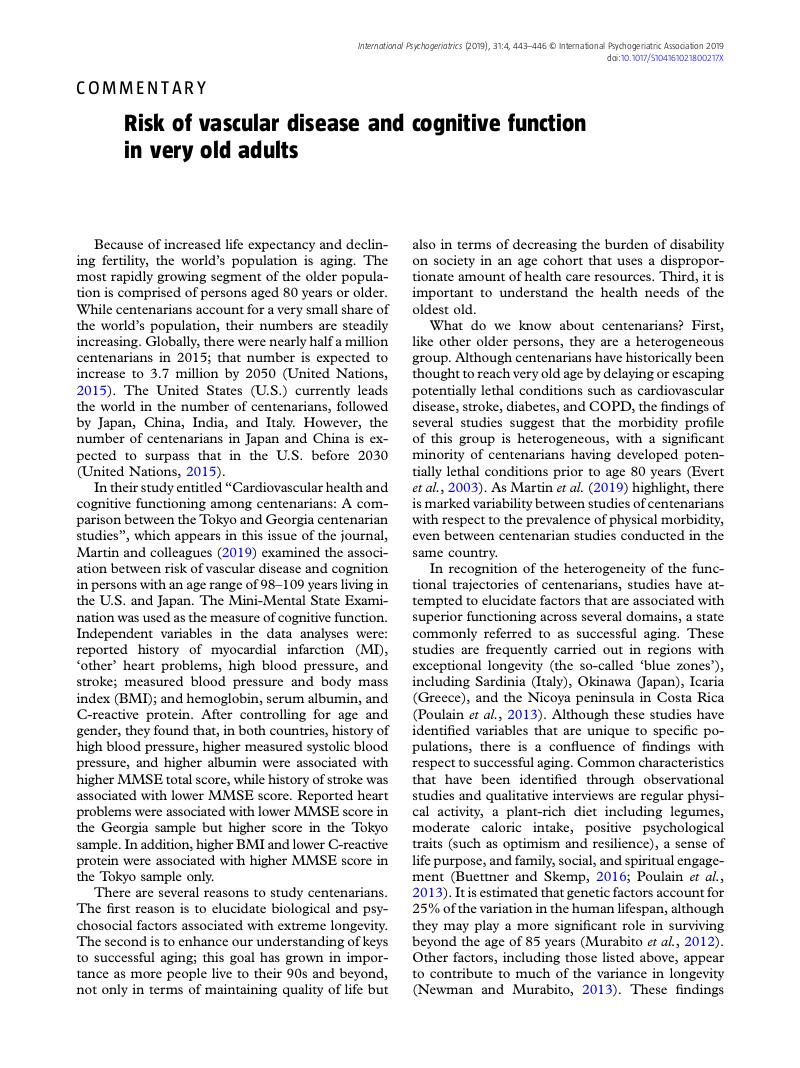Crossref Citations
This article has been cited by the following publications. This list is generated based on data provided by Crossref.
Li, Chien-Ching
Chen, Yi-Fan
Liang, Jersey
Matthews, Alicia K.
and
Barnes, Lisa L.
2021.
Trajectories of Multiple Behavioral Risk Factors and Their Associations With Cognitive Function Trajectories Among Older African Americans and White Americans.
Journal of Aging and Health,
Vol. 33,
Issue. 9,
p.
674.
Grishina, A. А.
Tynterova, A. M.
and
Skalin, Y. E.
2022.
Premorbid factors of early post-stroke cognitive impairment.
V.M. BEKHTEREV REVIEW OF PSYCHIATRY AND MEDICAL PSYCHOLOGY,
Vol. 56,
Issue. 3,
p.
48.
Tynterova, Anastasya M.
2024.
Impact of pre-stroke cognitive decline on rehabilitation effectiveness and cognitive-functional status of patients in the acute period of ischemic stroke.
V.M. BEKHTEREV REVIEW OF PSYCHIATRY AND MEDICAL PSYCHOLOGY,
Vol. 58,
Issue. 3,
p.
63.
Tynterova, Anastasia M.
Golubev, Arkady M.
Khoymov, Matvey S.
and
Shusharina, Natalia N.
2024.
Topics in Neurocognition [Working Title].



